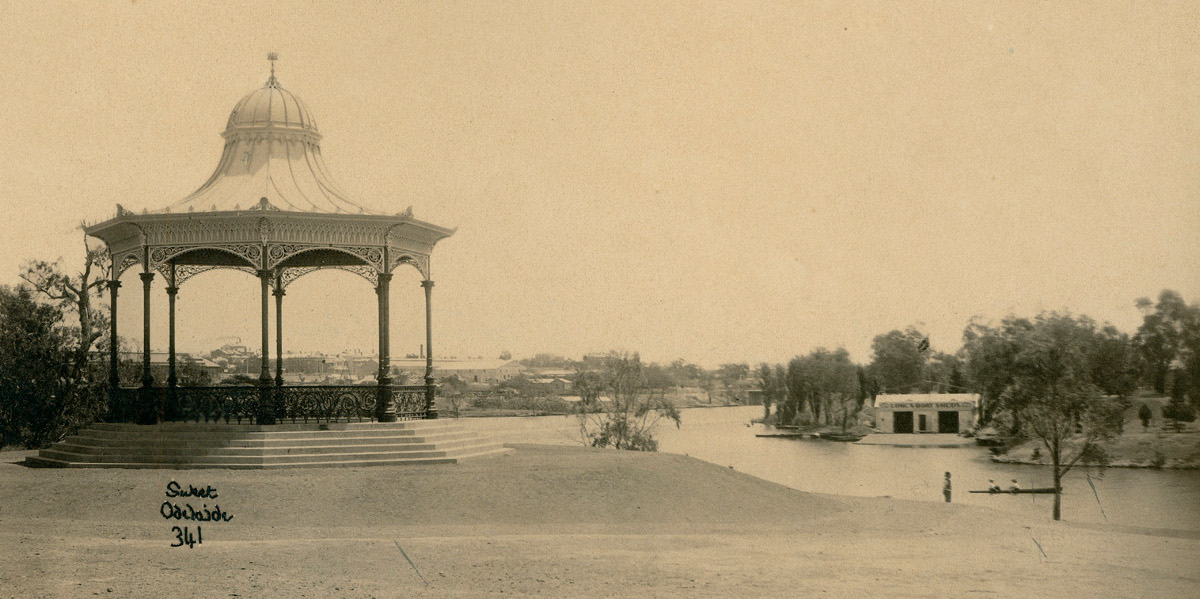Secrets of Adelaide’s Elder Rotunda

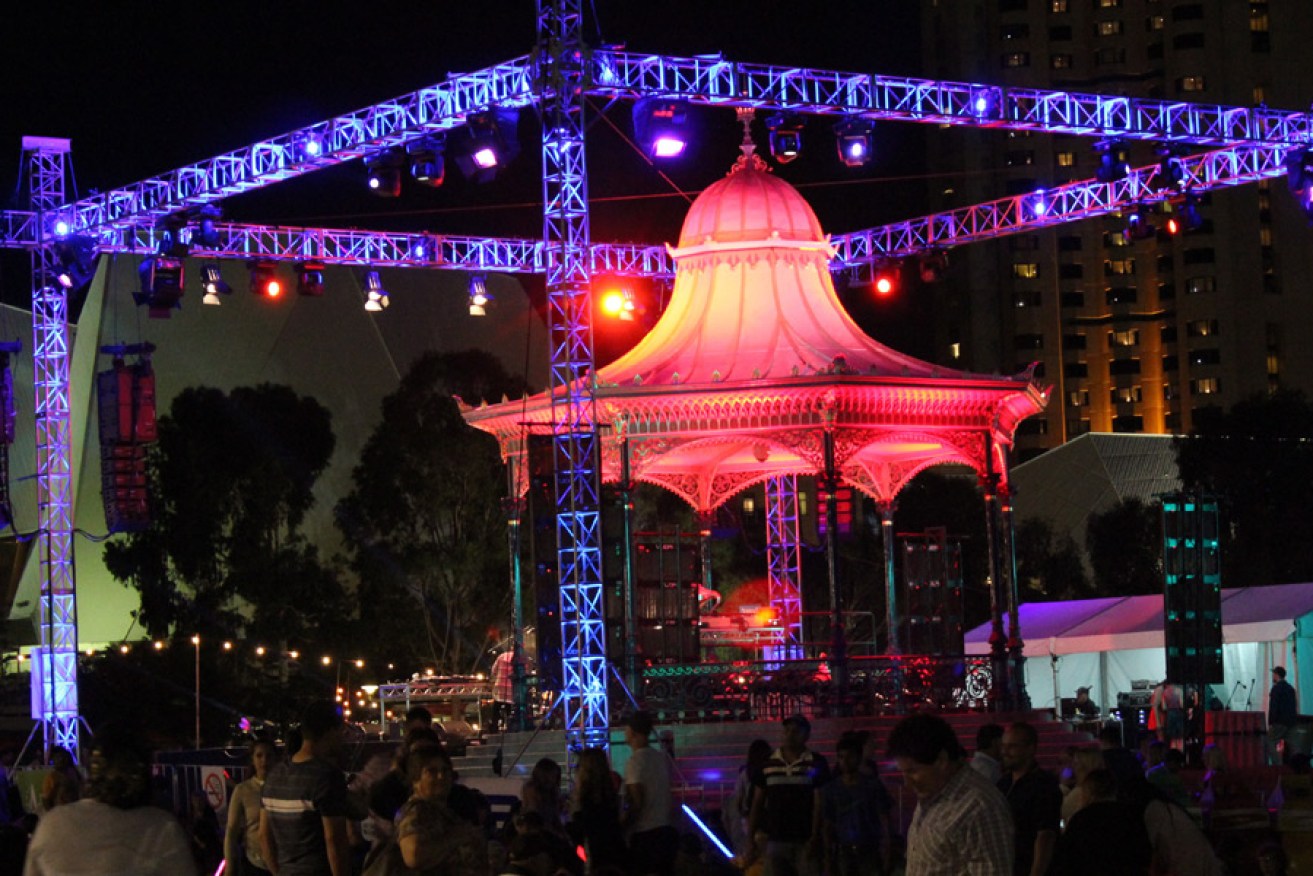
The newly restored Elder Rotunda lit up on New Year's Eve. Photo: AAP
A cavernous, octagonal void lies directly underneath the jewel of Adelaide’s parklands: the Elder Rotunda.
The brick and bluestone void – bereft of oxygen and scattered with 200 years of debris – holds the State Heritage bandstand six metres above ground level. 1882 ground level, that is.
The structure was prefabricated in Glasgow before being shipped to South Australia and raised aloft, overlooking the lake on the River Torrens (which was formed by a weir just a year earlier).
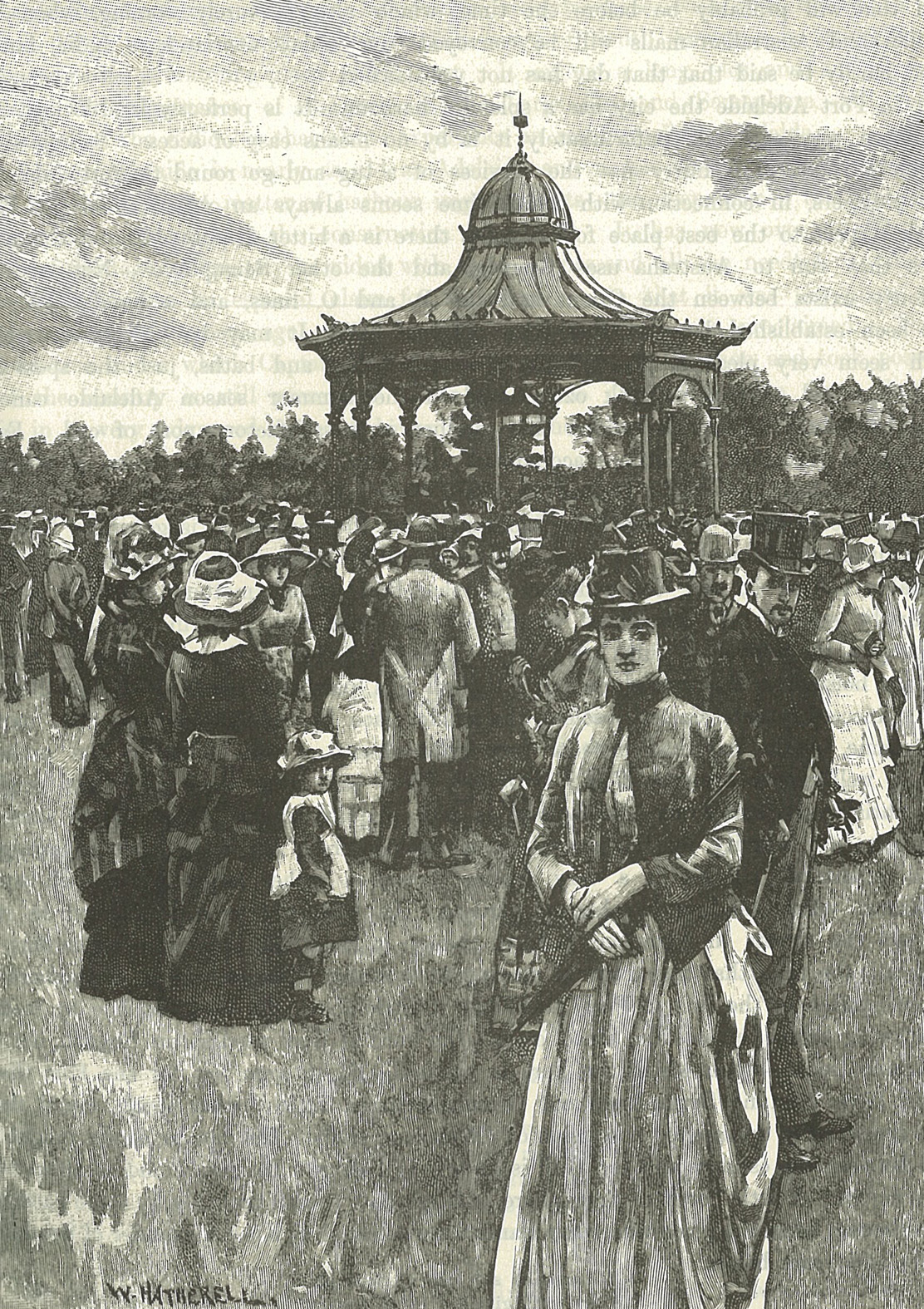
A typical public crowd attending a concert at the Rotunda circa 1888 (Cassell’s Picturesque Australasia).
Spare earth from the then ongoing construction of Adelaide’s sewerage system was piled around the cavern, giving the cast iron octagon the majesty it boasts today.
Before World War II, the rotunda attracted crowds of between 5000 and 6000 spectators to watch bands play every Thursday night.
On the night of its opening, thousands gathered to watch a military band play, while members of the Leiderdefal choir were positioned in boats on the lake.
But not all of the bandstand remains.
“There were basically octagonal music stands which were permanently in position in the middle of the rotunda,” says Andrew Klenke, one of the architects who led last year’s restoration of the structure.
“Musicians would sit around the perimeter and the band master would sit in the middle, conducting. It was very popular as a venue for musical performances.
“The structure was a gift from Sir Thomas Elder, at the time, who was on a trip to Scotland – his native land – (and) donated it to the the city council.”
Klenke was winched down into the hollow underneath the rotunda for an inspection, but had to be winched out again because of the low oxygen levels.
“You can get in there, but it’s pretty hard,” he says.
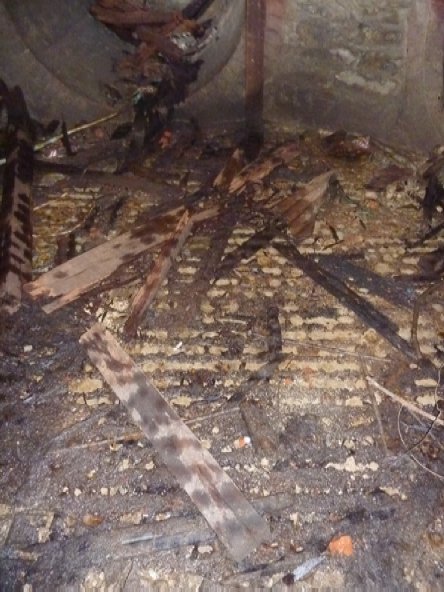
The remains of the stairs and platform at the bottom of the cavern beneath the rotunda. (Swanbury Pelnglase 2013)
“When I went in there to do an inspection, they basically put up a tripod over the top and put me in a harness and winched me down.”
“There’s a hatch in the concrete floor… and it’s just a big hole basically down there.
“It’s listed as a confined space; (but) it’s not confined. It’s quite sizable.
“It has really thick, stone walls with arches on each of the eight sides.
“An arch spreads the load either side, but then the arch underneath evens the spread of the loads down.”
A wooden staircase which used to lead down into the cavern has been reduced to rotting planks of wood on damp ground.
Klenke and his colleagues were commissioned by Adelaide City Council to restore the bandstand to its former glory, fixing corroded metal, repainting the structure, fixing leaks and updating the lighting.
“The iconic nature of this structure meant it had to be done to the highest standard possible,” Klenke says.
“Basically the whole structure is cast iron, except there’s some wrought iron in a few areas and then the roof is zinc.
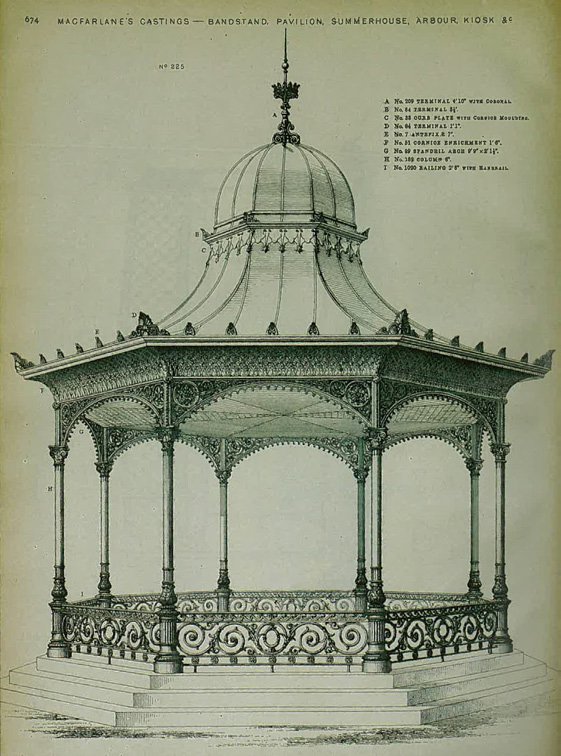
Bandstand Design No.225 from Walter MacFarlane & Co catalogue circa 1900 – an exact match for the Rotunda in Elder Park.
“We used an industrial coating system on the structure, which is pretty much the same system that was used in 1986, so we were replicating that.
“We had to make sure that we didn’t touch the structure at all, which was quite a feat in itself. We had to span directly over the structure to make sure that we weren’t resting on it in any way.”
The most delicate task was replacing the fragile gold leaf on the decorative elements of the structure, including on the crown and sphere of the finial and the stars of the valance.
“We had to be very cautious about when we gilded,” Klenke says. “There really couldn’t be any wind around at the time.”
The commissioned restoration is now complete, but according to Klenke, repairs to the rotunda must continue.
“It’s in a really good condition, but we still need to do some work.
“The granite steps – which all come from Granite Island (and) Victor Harbor – we didn’t have the sufficient funding to do the repairs on these, which will be the next exercise.
“Most of these structures, as long as they are properly maintained, can last forever.”
